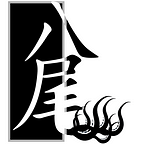Ancient Japan was a realm far more intricate than the Japan we know today. According to the Kojiki (Records of Ancient Matters), the world was brought into existence by Izanagi and Izanami, the two creator gods. It was then divided into various realms, each inhabited by different beings.
In that era, the universe was believed to be inhabited by a vast number of gods, known as Kami and demons, known as the Yokai, and as well as the mortals. Below were the basic inhabitants of ancient Japan.
- The 八百万の神 (yao yorozu no kamigami), also known as the myriad gods, are the gods of ancient Japan. They are said to number in the millions and represent all aspects of the natural world. They exist in trees, rivers, rocks, mountains, and other natural places. The myriad gods are further subcategorized into the Amatsukami (heavenly gods) and the Kunitsukami (earthly gods).
- The 妖怪 (Yokai) are demons and spirits that inhabit the underworld but are frequently seen on human land too. They can be benevolent or malevolent, and they often play a significant role in Japanese mythology. Yokai are said to be the spirits of animals, plants, or objects that have been transformed. They can also be created by human emotions, such as anger or fear.
- In the Kami mythology, the gods can also die or get corrupted. When they do, they become another subcategory of Yokai known as the Yomitsukami (underworld gods). Yomitsukami are often depicted as being more powerful and dangerous than other Yokai.
- 凡人 (Bonjin) are humans and are believed to have a close relationship with the gods (or yokai). They interacted with the gods through rituals, prayers, and offerings. Humans sought guidance and protection from the gods, and in turn, they carried out their responsibilities to honor and appease the divine forces. These interactions between humans and gods often shaped the mythology, folklore, and cultural practices of ancient Japan.
- While the gods and Yokai held supernatural powers, humans were regarded as mortal beings with limited abilities. Humans were able to communicate with the gods and Yokai through rituals and offerings, but they were ultimately subject to their power.
Next, let’s dwell into the different realms where these inhabitants reside.
The world was made up of 3 lands,
- 高天原 — Takama ga Hara (Heavenly Plains),
- 葦原中国 — Ashihara no Naka tsu Kuni (Central Land of Reed Plains),
- 黄泉国 — Yomi tsu Kuni (Land of the Dead or Underworld):
They are linked by 2 access points,
- 天の浮橋 — Ame-no-ukihashi (Heavenly Floating Bridge)
- 黄泉比良坂 — Yomi tsu Hirasaka (Wide Slope of Yomi)
高天原 — Takama ga Hara (Heavenly Plains):
Description: Takama ga Hara is the heavenly plains. It is a celestial realm inhabited by the Amatsukami(the heavenly gods).
Characteristics: Takama ga Hara is depicted as a serene and divine realm, filled with ethereal beauty. It is often portrayed as a vast expanse of heavenly gardens, shimmering lakes, and grand palaces. The atmosphere is infused with a sense of peace and spiritual energy.
葦原中国 — Ashihara no Naka tsu Kuni (Central Land of Reed Plains):
Description: Ashihara no Naka tsu Kuni is the central land, also known as the Central Land of Reed Plains.
Characteristics: Ashihara no Naka tsu Kuni is characterized by its diverse landscapes and natural beauty. It encompasses vast plains, lush forests, flowing rivers, and fertile fields. The land is abundant with life, and it serves as the home for both the Kunitsukami (earthly gods) and human inhabitants.
黄泉国 — Yomi tsu Kuni (Land of the Dead):
Description: Yomi tsu Kuni is the land of the dead or the underworld. It is a realm separated from the heavenly and earthly realms, inhabited by the Yomitsukami(the dead or corrupted gods), and various yokai (demons or spirits).
Characteristics: Yomi tsu Kuni is depicted as a dark and foreboding realm. It is often associated with gloomy forests, desolate landscapes, and treacherous caves. The Yomitsukami and yokai residing in Yomi tsu Kuni possess a twisted and often malevolent nature, although some may hide their existence or display greater intelligence.
Link Points: There are basically 2 links that connect the 3 realms together, and can only be accessed under certain conditions. This is to keep inhabitants from the different lands to be interfering with each other’s rulings. However, in untold legends, there seems to be a lot more hidden link points.
天の浮橋 — Ame-no-ukihashi (Heavenly Floating Bridge)
A mystical bridge that connects Takama ga Hara, the heavenly plains, to the central land. It is portrayed as a bridge made of fluffy clouds, allowing passage between the realms under specific conditions.
黄泉比良坂 — Yomi tsu Hirasaka (Wide Slope of Yomi)
The Wide Slope of Yomi links the central land to the land of Yomi. At the top of the slope lies a great torii, which is the entrance towards Yomi. At the end of the slope is a cave that leads into the underworld. There is a large boulder currently blocking the cave. It was magically created by Izanagi when he fled Yomi previously. Over time, the magic on the boulder that seals the entrance to Yomi has slowly deteriorated. The boulder itself is also a kami, called 道反の大神 Chigaeshi no Ōkami, the Great God of the Way Back.
So there you go, with these basic knowledge, you will be able to better understand the foundation of the ancient Kami cosmology. In my future articles, I will introduce some of the most important (or interesting) Kami and Yokai, and their tales. They sometimes will also involve the Buddhas and local myths.
Follow my twitter accounts @TouriiJP and @0xWyne while I bring you to an hidden world in Japan where legends are still alive and where the Kami and Yokai co-exist with the locals till today.
#Japan #JapaneseFolklore #LocalSecrets #travel #TouriiTourism #touriist
